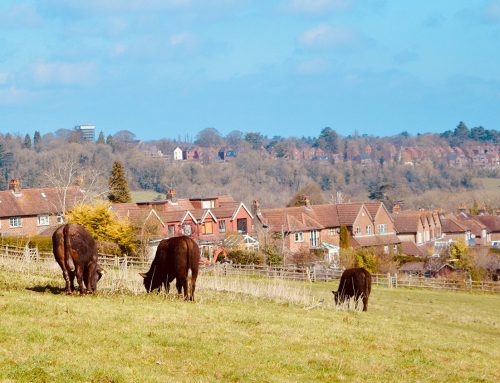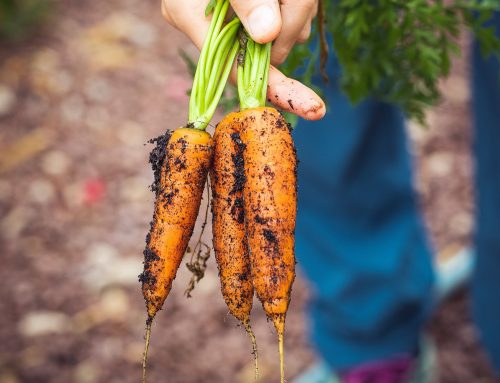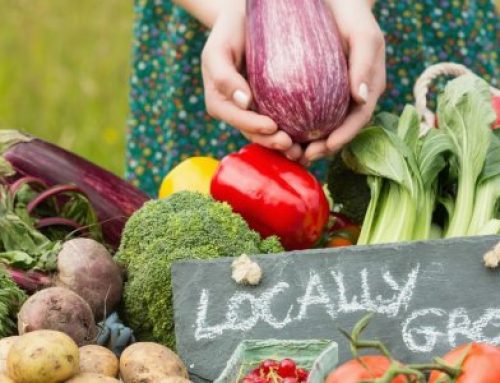We can all help to reduce food waste, small steps can make big differences
The insane volume of food waste across our supply chain is a costly problem for us all, present to varying degrees at every step throughout our food supply chain from field to table.
The Director of Policy at the National Farmers’ Union (NFU), Andrew Clark, sums it up well with the comment: ‘Food waste is in no one’s interest, least of all farmers…The whole industry needs to pull together to identify solutions right across the supply chain and do their bit to keep waste to a minimum.’
The UK is leading the field in addressing this, with research suggesting food waste reduced by nearly half a million tonnes between 2015 and 2018. However, there is much more to do.
Estimates are that 9.5Mn tonnes of food is wasted across the UK annually, with 70% of this is intended for human consumption. Apart from the ethical questions raised with people suffering from food poverty and an avoidable environmental impact of 25Mn tonnes of greenhouse gas (GHG) emissions, the direct financial cost is over £19Bn.
Our article highlights the cost of food waste throughout the supply chain, and we share a few ideas as to how we can all help to reduce such waste. We would like to give your business – whether a food producer or a retailer – some ideas as to how to begin reducing waste and reducing this unnecessary cost.
We will not cover the various environmental and ethical ramifications of reducing food waste as this is covered in some of our other blog articles, see the further reading section at the bottom. Or, if you want to find out more on how to reduce waste we suggest a good first port of call would be Winnow Solutions.
Broadly speaking, by leveraging traditional waste streams that would normally mean products going to landfill or energy production to source products, food manufacturers can benefit from lower prices. As food waste is an emerging, but still relatively undeveloped area it often means competition for these products is often lower too. This offers a big market opportunity, with early entrants such as condiment producer Rubies In The Rubble testament to the fact.
So, let’s start with the farm, move through production, supply chain and retail, and end at our tables.
Food waste at the farm
This is termed primary production waste, and in 2019 was estimated as a surprising 7% of the total annual UK harvest. This equates to 3.6 Mn tonnes of food surplus and waste with much of it either ploughed back into the fields, composted or fed to farm animals; The loss to the UK is economy estimated at £1.2Bn.
A study published in 2019 gives an insight into the type of food wasted.
At the top of the waste pile are Potatoes, Sugar Beet and Wheat which comprise 55% of the total estimate by volume.
However, there are a number of opportunities to tap into this waste stream to reduce waste and lower overall cost. A good example is lettuce, where primary production stands at nearly 25%, worth £50Mn and mainly caused due to products not meeting the exacting standards or retail.
It is shocking to find that a third of farmed fruit and vegetables do not meet the strict demands set by retailers. But this is changing, with businesses seeing the opportunity such as Oddbox who rescued over 1.5 million kilograms of fruit and veg in 2019 and now has a customer base of more than 10,000.
Food waste during manufacturing
Food waste during manufacturing accounts for 800 thousands tonnes of food loss. This is a similar volume to the hospitality and food service sector
Technology can play a big role in increasing the efficiency of our supply chains.
Imaging technology can play a big role in supplying data about the ripeness of food at a point in the supply chain. Companies developing this technology – like Impact Vision – can reduce food loss by optimising sorting and distribution, and prevent product recalls from contamination.
Manufacturers are able to reduce sources of food waste through improved forecasting models too. French ready meal supplier Fleury Michon achieved 99.5% service levels by using supply chain planning tool FuturMaster.
Reducing ingredient and product waste is possible too. A collaboration between Britvic and Carlsberg led to £117,000 per year in syrup savings. Through measuring waste, they were able to identify key areas to act on, including reviews on preparing syrups and standard operating procedures.
Food waste in hospitality and retail
Within the hospitality and food service space, many of the major brands are setting aggressive food waste targets.
IKEA, Compass Group, and IHG all set bold targets to reduce their waste by 2030. Traction here is strong, with new artificial intelligence from Winnow helping chefs to classify waste. Equipped with an understanding of what is wasted, chefs can make better decisions around production planning.
Crucially for hospitality and food service, food waste as a percentage of food purchases or sales is at nearly 18%. This figure is higher than any other sector, and shows the opportunity to optimise efficiency and increase profits.
On the retail side, retailers are becoming more public around tackling food waste within their operations.
While mandatory food waste reporting is not required for retailers yet, many are taking positive steps.
Iceland, for instance, claimed a 23% reduction in 100 stores in the past two years. Tesco – who have led the way in food waste reporting for several years – have reduced waste by 15% across their whole business. Waste now represents only 0.42% of Tesco’s total sales.
Other retailers are also tapping into the trend. Both Morrisons and Lidl are selling ‘wonky veg’. Meanwhile, Asda are trialing an edible coating applied to fresh fruit and vegetables to extend their shelf life.
However, this total amount only represents a fractional proportion of retail’s overall vegetable sales.
Yet, arguably more is being done to combat plastic waste. There are numerous plastic reduction schemes across the retail sector. Retailers are teaming up with producers to cut their use of plastics.
For instance, Tesco teams up with Heinz to remove plastic wrapping from multipack cans. Heinken launched their plastic free beers last year.
This is positive from an environmental point of view. However, it also stacks up from a consumer angle too. 82% of polled consumers are actively trying to reduce the amount they throw away.
Small retailers can adopt a reduced or free from plastic store much faster than the larger players. Combined with a range of wonky fruit and vegetables, retailers have an opportunity to build a loyal group of UK consumers. (For more tips on building customer loyalty, see here.)
Food wastage at home
The biggest area of food waste in the UK economy is in our homes. Estimated at over 4.5 million tonnes, food wastage in our households is bigger than farm, manufacturing, retail and hospitality combined.
The average UK household wastes the equivalent of eight meals a week. This is worth £700 per year for a family with children.
Waste is expected to have risen during the Coronavirus pandemic, however. With many households stockpiling food, waste levels will have risen further.
While education and improvements to product labelling are pathways to reduce waste in our home, there are no easy answers.
Summary
The good news for food producers is that the waste sector is still nascent.
There remains an enormous amount of opportunity along the supply chain to access lower priced products, build engagement from existing customers, and attract new ones.
How can you get started?
Firstly, get listed with UKFoodWeb to access a whole community of consumers who are engaged with nutritional, local, low waste products.
Next, try some of the products that are leading the market, like Rubies in the Rubble ketchup and Toast Ale beers.
Finally, speak to your connected wholesalers and local farmers about their waste streams, and the possibility to tap into those areas.
For more, follow us on Instagram for inspiration around some of UKFoodWeb’s leading products.






